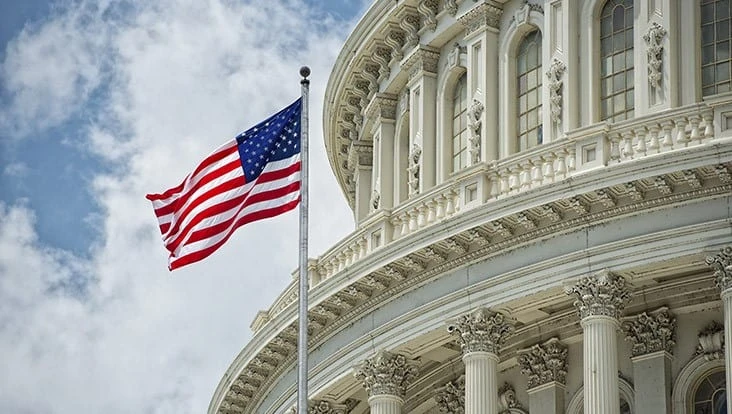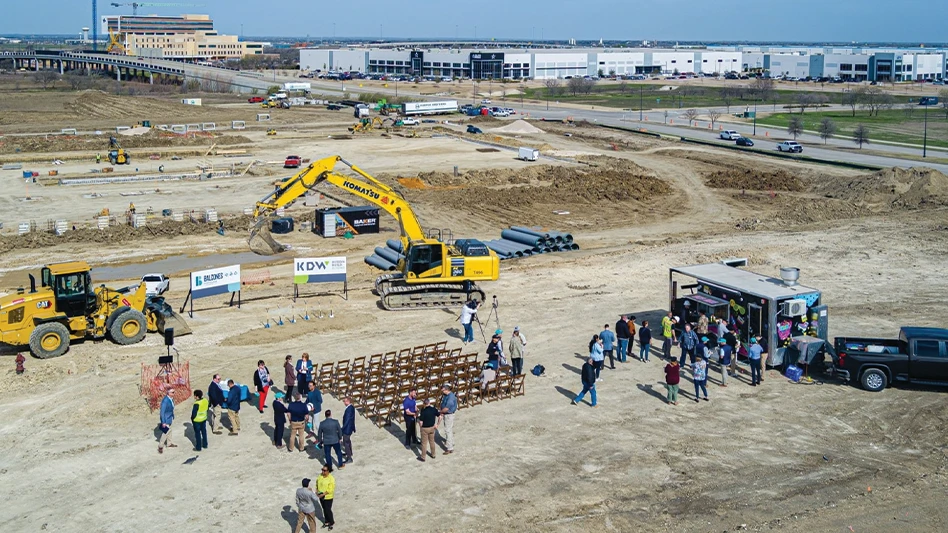
Andrea Izzotti | www.istock.com
Environmental justice (EJ), generally refers to a governmental response to the disparate environmental and public health impacts of pollution on minority and economically disadvantaged communities. The federal government, every state and the District of Columbia have some form of EJ policy or regulation. These policies and regulations are intended to protect minorities and low-income citizens from the disproportionately high exposure to pollution and heavy industrial activity historically located in or near such communities.
The definition of EJ varies by jurisdiction, but two main elements are consistent: fair treatment and meaningful involvement. Fair treatment means that no group, whether racial, socioeconomic or ethnic, should bear a disproportionate share of the negative environmental consequences resulting from industrial, municipal and commercial operations. Meaningful involvement means that the public has an opportunity to participate in decisions that might affect their environment and/or health. Often the public’s contribution can influence a regulatory agency’s decision. All regulatory agencies are required, at some stage, to listen to and consider community concerns in their decision-making process. To varying degrees, EJ regulations require the decision-makers to seek out and facilitate the involvement of those potentially affected.
Biden administration plans
Correcting environmental inequities is listed as a top priority for President-elect Joe Biden. Among other measures, he has called for the establishment of EJ offices at the Department of Justice and the White House and for overhauling the Environmental Protection Agency’s (EPA’s) External Civil Rights Compliance Office.
Biden released his Plan to Secure Environmental Justice and Equitable Opportunity in July. The plan emphasizes a whole-of-government approach to revise and reinvigorate EJ policy at the federal level. Shortly before Biden tapped her as his running mate, Vice President-elect Kamala Harris backed a similar approach when she was a senator, introducing legislation that would have required federal agencies to consider cumulative impacts and persistent violations in certain permitting decisions, as well as a range of policy decisions and other actions.
The chances that Biden will be able to take concrete action on EJ legislation recently was boosted when Democrats clinched a slim majority in the Senate. While Democratic control of the Senate means EJ legislation is more likely, such legislation might need to be moderated to pass through a closely divided Congress. Even if Biden could pass some EJ measures through legislation, it is most likely that he will attempt to use executive authority to move his EJ agenda forward.
Executive orders (EOs) are a likely route for doing so. EOs are published directives from the president that have the force of law, and they can be powerful, albeit easily reversible, tools. Based on positions already expressed by Biden and Harris, some examples of actions that are likely to be taken through EOs include:
- Updating EO 12898 (1994)
- This EO directs federal agencies to identify and address disproportionately high and adverse human health or environmental effects of their programs, policies, and activities on minority and low-income populations.
- Biden wants to collaborate with local EJ leaders to develop performance metrics for ensuring accountability and implementation of EO 12898 and to establish regular performance reviews of agencies to track EJ progress.
- Rescind Trump-era actions
- This could include EOs, rulemakings, policies and other actions that implicate EJ.
- The focus will be on actions ostensibly taken to streamline permitting processes, encourage deregulatory action and remove consideration of impacts in the implementation of environmental regulations.
- Increased monitoring and public access to data
- There likely will be a strong emphasis on the use of science, enhanced monitoring and mapping technology, which can be used to improve the availability and access to data about impacts on EJ communities.
- Enhanced enforcement
- As noted above, Biden plans to establish EJ offices at the Department of Justice and the White House and reform EPA’s External Civil Rights Compliance Office.
- As noted above, Biden plans to establish EJ offices at the Department of Justice and the White House and reform EPA’s External Civil Rights Compliance Office.
Biden’s cabinet selections
While Biden has been making significant EJ-related promises over the past year, his recent selection of Michael Regan, head of North Carolina’s Department of Environmental Quality, to serve as EPA administrator is a clear sign that EJ policy will be a primary focus of the incoming administration.
For most of November and December, people close to the transition said Biden’s top choice for EPA administrator was Mary Nichols, the outgoing head of the California Air Resources Board, who battled with the Trump administration’s attempt to roll back pollution protections. However, consideration of Nichols’ hit a wall after EJ groups said she had ignored their concerns for years.
In addition to picking Regan, Biden also selected New Mexico Rep. Deb Haaland to head the Interior Department. Both Regan and Haaland have resumes strong on EJ policy and represent a significant win for the progressive movement. Since being chosen as Biden’s pick to head EPA, Regan already has pledged to move quickly to cooperate with states and address EJ issues while also reaching out to industry as partners in developing environmental solutions.
For the time being, in many areas of the country, the applicable EJ policy or regulations will be intertwined with and have a significant effect on the continued and future operations of most recycling facilities.
State-level EJ activity
The recent re-emphasis and focus on EJ policy has not been limited to the federal government. Within the last year, several states have either updated their existing EJ regulations or passed into law aggressive new EJ measures.
One of the states that has recently updated its EJ regulations is Connecticut, which passed a bill during a special session in October of last year that provides increased opportunities for communities to participate in permitting processes. The co-author of the legislation was motivated to revise Connecticut’s eight-year-old EJ statute after being disappointed with a local community’s ability to stop the expansion of a transfer station.
In August, New Jersey’s governor signed into law new EJ legislation after several failed attempts to do so over the last few years. The legislation was enacted over the concerns of many in the recycling industry as it is feared the legislation will have a significant impact on the construction of new recycling facilities and the expansion, or even continued operation, of existing recycling facilities. For instance, the new legislation requires that permits be denied if the New Jersey Department of Environmental Protection (NJDEP) determines that a new facility would disproportionately impact “overburdened” communities compared with other New Jersey communities.
While the NJDEP is undertaking an extensive regulatory development process to fully implement the legislation, some measures of the legislation that likely will impact the recycling industry are clear. For example, environmental and public health impacts on overburdened communities must be evaluated during permit reviews for (a) recycling facilities that receive at least 100 tons of recyclables per day; (b) scrap metal facilities; (c) transfer stations; (d) solid waste facilities; and (e) resource recovery facilities. All permit applications or renewals for these types of facilities also will require active community involvement and the preparation of extensive documentation in the form of an environmental justice impact statement (EJIS) 60 days prior to the holding of a public hearing.
The legislation vests substantial and broad authority in the NJDEP concerning proposals for new facilities or the expansion of existing facilities, or for the renewal of existing facilities’ major source permits, in overburdened communities. As a result, it could become unlikely that new facilities will be sited in overburdened communities, and existing facilities seeking to expand will confront serious challenges.
Based on the experience at the federal level with environmental impact statements, the EJIS process has the potential to be even more contentious. Whatever the NJDEP decides in a particular permitting decision, at least one party is likely to be displeased, sparking litigation and delays.
Getting ahead of EJ battles
For the time being, in many areas of the country, the applicable EJ policy or regulations will be intertwined with and have a significant effect on the continued and future operations of most recycling facilities. At times planning for and addressing EJ regulations can be confusing and overwhelming. Taking a structured, measured approach can help to create an organized, appropriately sized and calculated EJ response plan that is actionable and will be followed through.
At first, it is important to understand whether the community where a facility is located or to be located is an EJ community. EJ communities are typically designated based on demographics, such as economic status, racial makeup and language. For instance, in Massachusetts, an EJ “population” can be an area where annual median household income is equal to or less than 65 percent of the statewide median, 25 percent or more of the residents identify as a race other than white or 25 percent or more of households have no one over the age of 14 who speaks English only or very well. Typically, interactive maps or lists of communities are available for reference.
Next, it is important to understand whether any current or planned activity or land use is regulated by relevant EJ regulations. For instance, in Connecticut, the main trigger for the applicable EJ regulations is whether a facility will be a “major source” of air pollution.
If answers to the above reveal that any current or future activities could trigger applicable EJ regulations, then understanding all of the requirements of those regulations (e.g., public meetings, educational requirements, public outreach, public participation) and potential timelines associated with them could be critical to continued operations.
A facility does not need to wait until an EJ challenge knocks on its door before taking action. While options for addressing EJ concerns abound, several things can be done to help reduce the risk EJ challenges will impact your facility.
For instance, engage with the community early and often to build trust and mutual understanding. Take a serious look at potential cumulative impacts of your facility and develop and implement mitigation strategies early on. Use available EJ data and tools to locate new facilities or to prepare for modifications of existing facilities. Engage consultants and attorneys to develop an EJ policy, either external or internal, implement the policy and document that implementation for future reference.
While no preventative measures are guaranteed to eliminate all EJ challenges or issues, making a good faith effort to understand and manage any impacts your facility could have on your local community is a good start.
Jon Schaefer and Earl Phillips serve as co-leads of Robinson+Cole’s recycling practice. Together they have more than 40 years’ experience working with the scrap recycling industry and its members. They have provided counsel with respect to due diligence and transactions; facility planning and risk management; facility location and relocation; environmental, health and safety (EH&S) permitting and compliance as well as defense of EH&S enforcement matters; and all manner of dispute resolution. They can be contacted via email at jschaefer@rc.com and ephillips@rc.com, respectively.
Get curated news on YOUR industry.
Enter your email to receive our newsletters.
Latest from Recycling Today
- Agilyx says Styrenyx technology reduces carbon footprint in styrene production
- SABIC’s Trucircle PE used for greenhouse roofing
- Hydro to add wire rod casthouse in Norway
- Hindalco to invest in copper, aluminum business in India
- Recycled steel price crosses $500 per ton threshold
- Smithers report looks at PCR plastic’s near-term prospects
- Plastics association quantifies US-EU trade dispute impacts
- Nucor expects slimmer profits in early 2025






